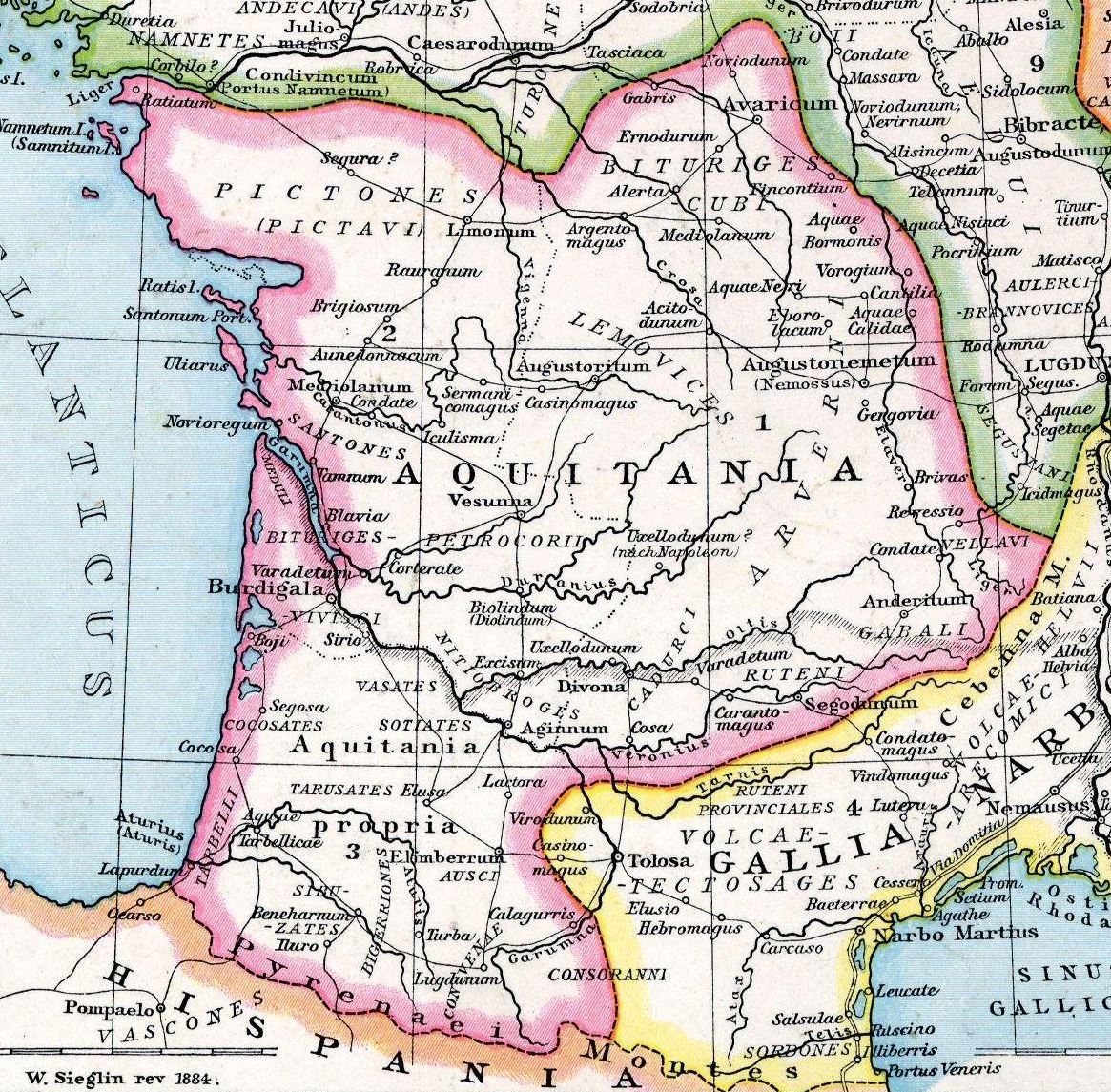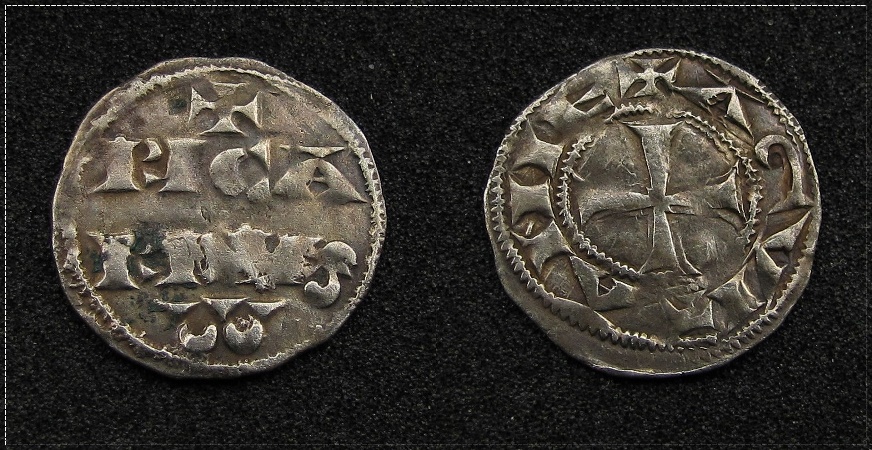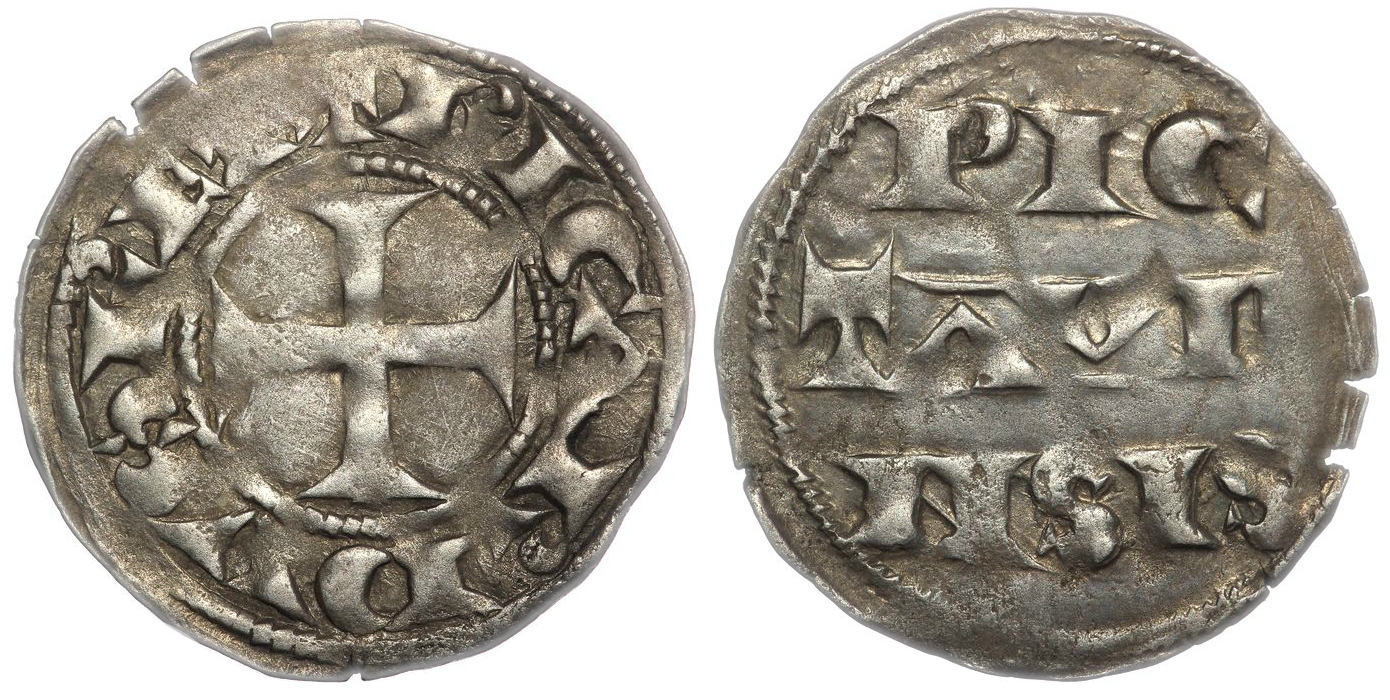Gallia Aquitania, also known as Aquitaine or Aquitaine Gaul, was a province of the Roman Empire.
It lies in present-day southwest France, where it gives its name to the modern region of Aquitaine. It was bordered by the provinces of Gallia Lugdunensis, Gallia Narbonensis, and Hispania Tarraconensis.
Aquitania was a part of Gallia Comata, literally meaning ‘long-haired Gaul’, as opposed to Gallia Bracata ‘trousered Gaul’, a term derived from bracae (‘breeches’) for Gallia Narbonensis.
It lies in present-day southwest France, where it gives its name to the modern region of Aquitaine. It was bordered by the provinces of Gallia Lugdunensis, Gallia Narbonensis, and Hispania Tarraconensis.
Aquitania was a part of Gallia Comata, literally meaning ‘long-haired Gaul’, as opposed to Gallia Bracata ‘trousered Gaul’, a term derived from bracae (‘breeches’) for Gallia Narbonensis.

(1)
Richard I

Obverse: +|RICA|RDVS|ω.in two lines across field, cross above, ω below.
Reverse: +AQVITANIE, Cross pattee within inner circle.
Diameter:
18.51 mm
Die Orientation: 0 H
Weight: 0.86 g
Die Orientation: 0 H
Weight: 0.86 g
Silver Denier as Duke of Aquitane. Richard I (1157-1199), known also as Richard the Lionheart, was the second son of Henry II. He became Duke of Aquitaine and Count of Poitou in 1172, but was later forced to surrender Aquitaine to his mother, Eleanor by 1185. Richard became King of England on Henry's death in 1189, but spent little of his reign in England, because he was either on crusade or held prisoner. He was killed at the siege of Chalus in France in 1199.All of the coins minted in England during Richard's reign are of a design introduced by his father and carry the name Henry. The only coins to have Richard's name on them were minted in France.
Elias 4; Poey d
(2)
Richard I

Obverse: + RICARDVS REX; around Cross
Reverse: PIC / TAVIE / NSIS in three lines
Diameter:
19 mm
Die Orientation: -
Weight: 0.94 g
Die Orientation: -
Weight: 0.94 g
The coins struck by Richard the Lionheart in his French possession are the only coins to bear his name. His English coinage was struck in the name of his father HENRICVS. Richard I was a key leader in the Third Crusade. He captured Cyprus, and aided in the capture of Acre in 1191 AD. He also defeated Saladin's forces at the Battle of Arsuf in Septemberof 1191, and fought the great kurdish general to a stalemate. He and Saladin finally came to a settlement in September 1192 AD which included an agreement allowing Christian access to Jerusalem. It also included a three-year truce.
B. 424; P.A. 2505; Elias 8; D. 920
